European skipper (?) (Thymelicus lineola)
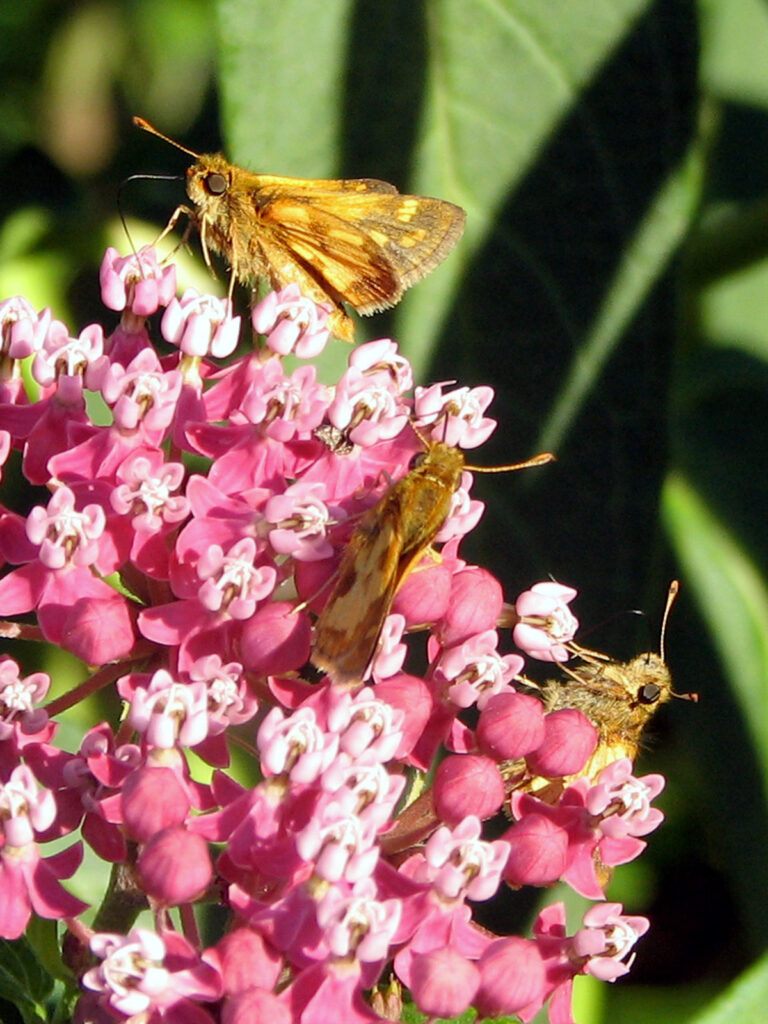
As the Stokes Butterfly book says, skippers are in some ways intermediate between butterflies and moths. This type always look to me like little jet fighters. I know there are many non-native skippers. I wouldn’t be surprised if most of the ones I see are European skippers, but I haven’t tried to identify them yet.
HOST PLANTS: In general, grasses and legumes
More European skipper info at Butterflies and Moths of North America
Silver-spotted skipper (Epargyreus clarus)
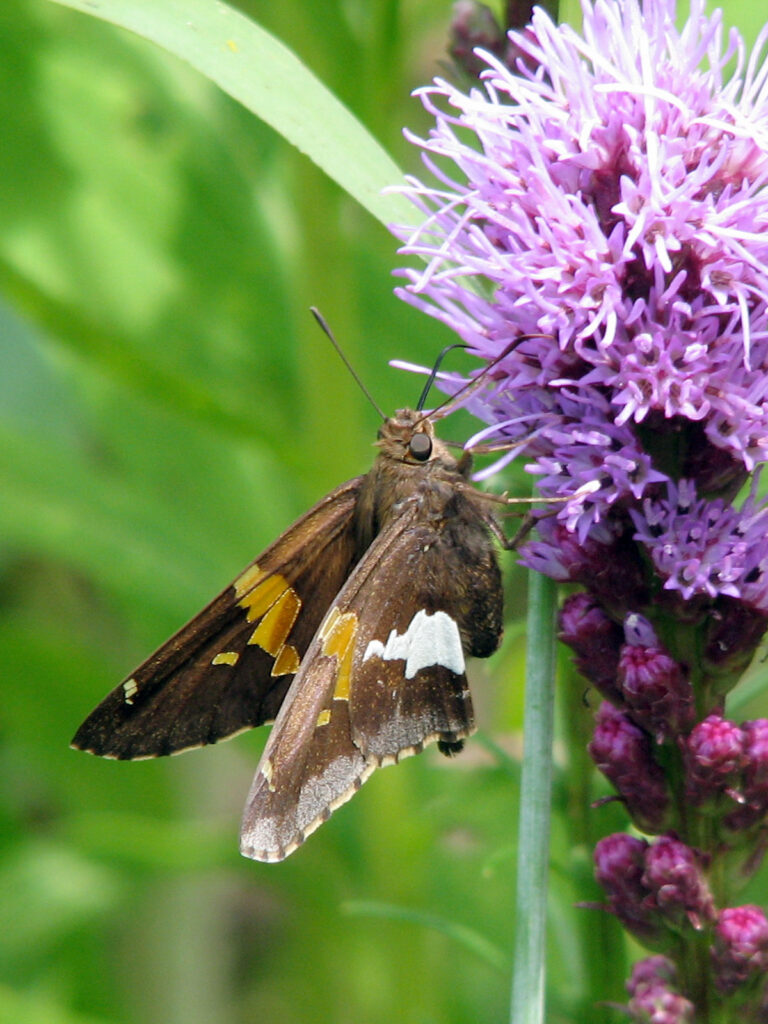
Silver-spotted skippers are somewhat common in my yard, though not as common as the European skippers unfortunately. Their white spot makes them quite noticeable.
HOST PLANTS: Black locust and woody legumes
More silver-spotted skipper info at Butterflies and Moths of North America
Dreamy duskywing (Erynnis icelus)
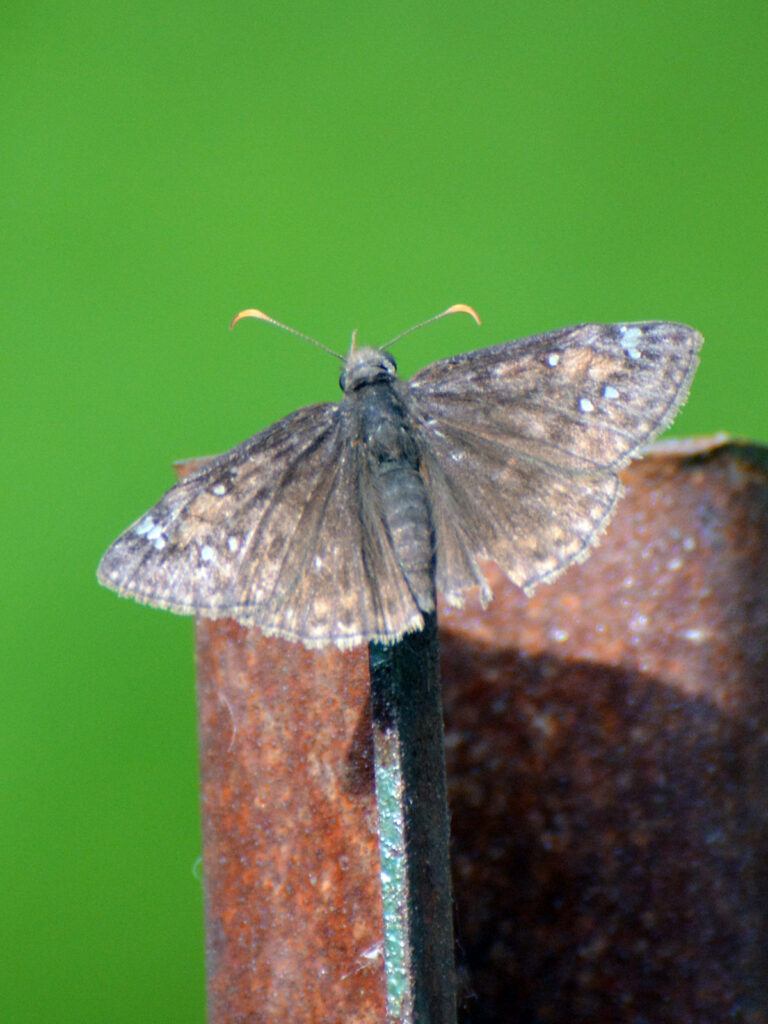
This may be a dreamy duskywing, resting on a post in the garden.
HOST PLANTS: Poplars, willows, and possibly oaks
- Learn more:
- Butterflies and Moths of North America: dreamy duskywing info
- Butterflies of Massachusetts
Columbine duskywing (Erynnis lucilius)
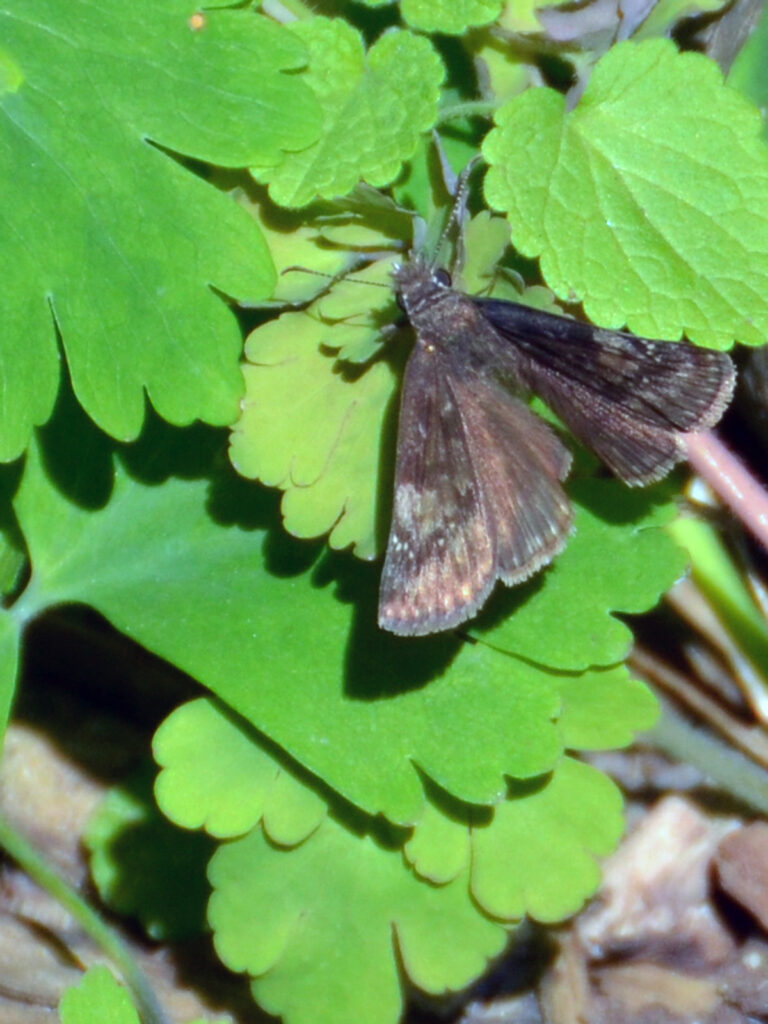
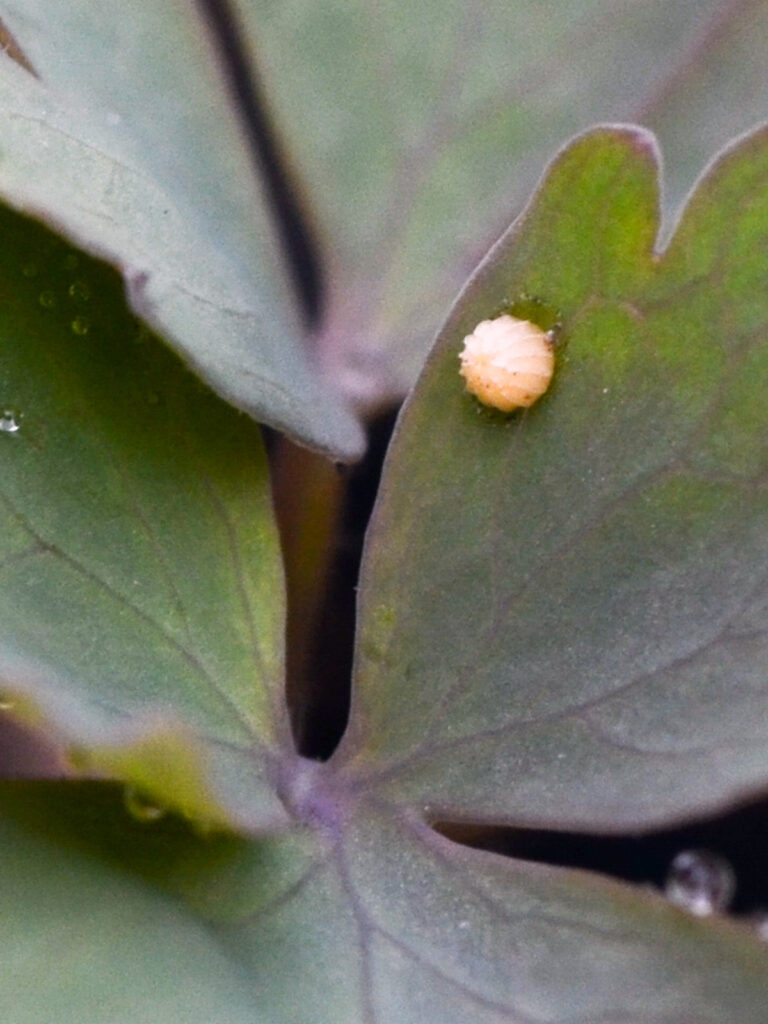
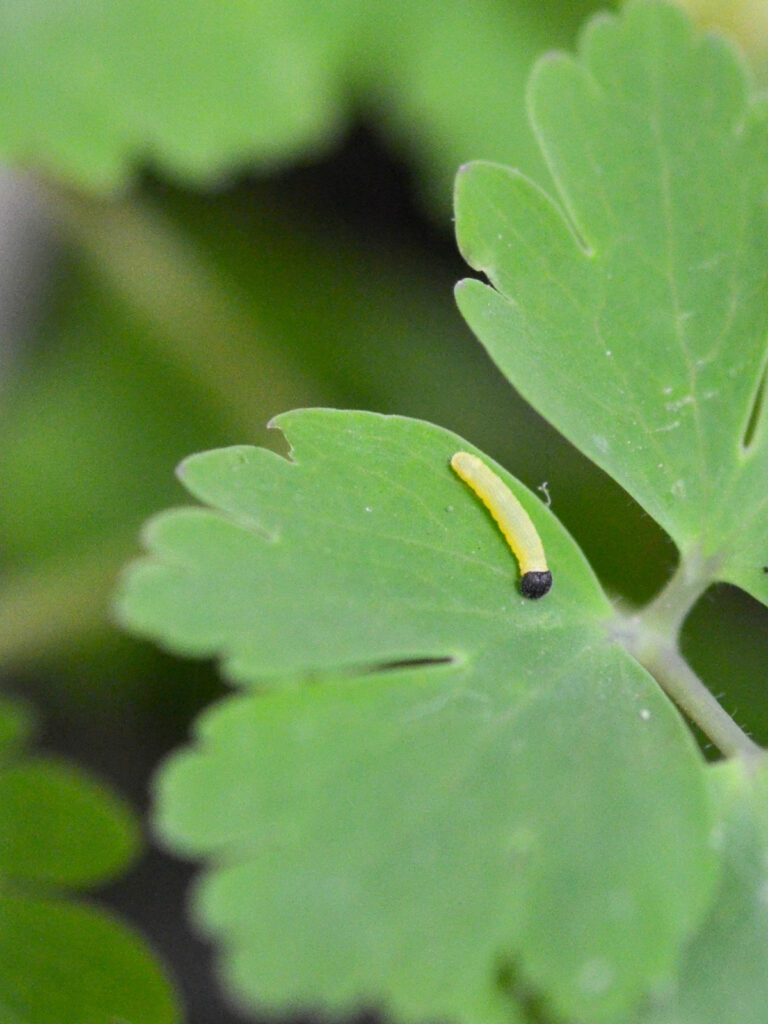
I have a lot of native columbine, so it’s not surprising to find this skipper. I saw an adult duskywing laying eggs on some columbine in our path (Sept. 2020), so I potted up the plants and brought them inside to see how they develop. It hibernates in the winter as a caterpillar, so I’ll be interested in seeing how they emerge in the spring.
HOST PLANTS: Native columbine (Aquilegia canadensis) – its ONLY host plant!!
- Learn more:
- Butterflies and Moths of North America: Erynnis lucilius
- Butterflies of Massachusetts
Horace’s Duskywing (Erynnis horatius)
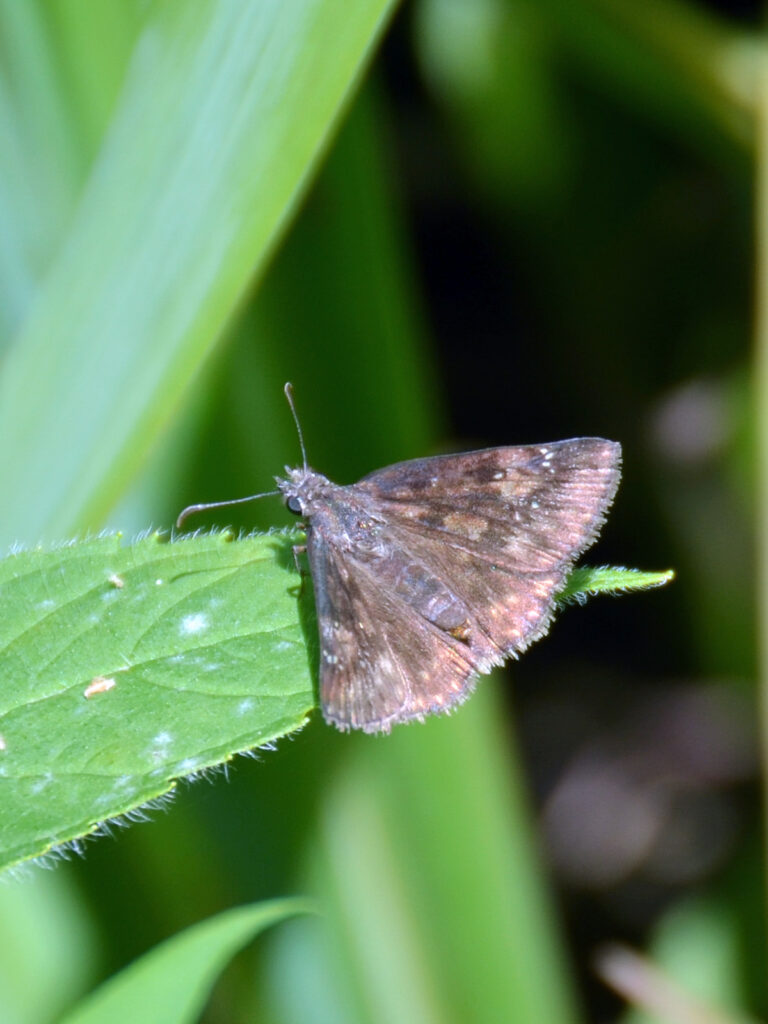
I think I must have ID’d this with BugGuide. There’s no way I would have come up with “Horace’s Duskywing” otherwise!
HOST PLANTS: Various oaks
More info about Horace’s Duskywing at Butterflies of Massachusetts
Wild indigo duskywing (Erynnis baptisiae)
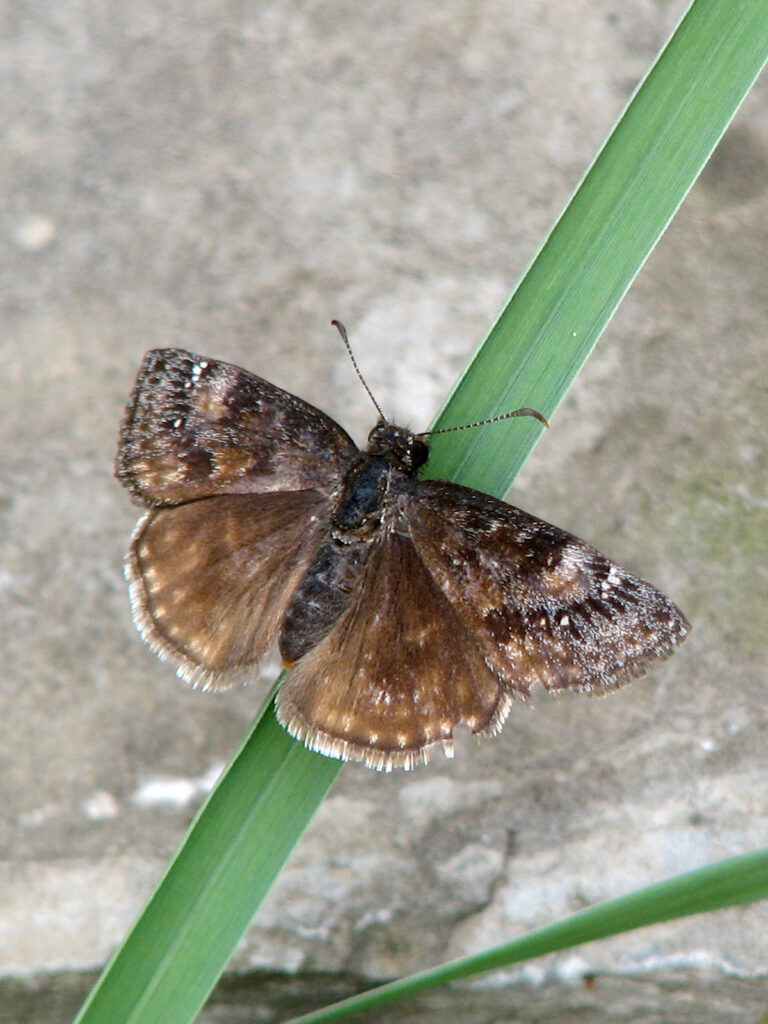
I think it’s a good example of a skipper that may not have spectacular colors, but whose shape and general appearance still is quite charming.
It’s also a good example of the importance of caterpillar food plants — they’re even named after them! [Note: The genus of wild indigo is Baptisia.]
HOST PLANTS: Wild indigo (Baptisia), wild lupine; has also adapted to the non-native crown vetch
Learn more about wild indigo duskywing at Butterflies of Massachusetts
